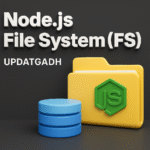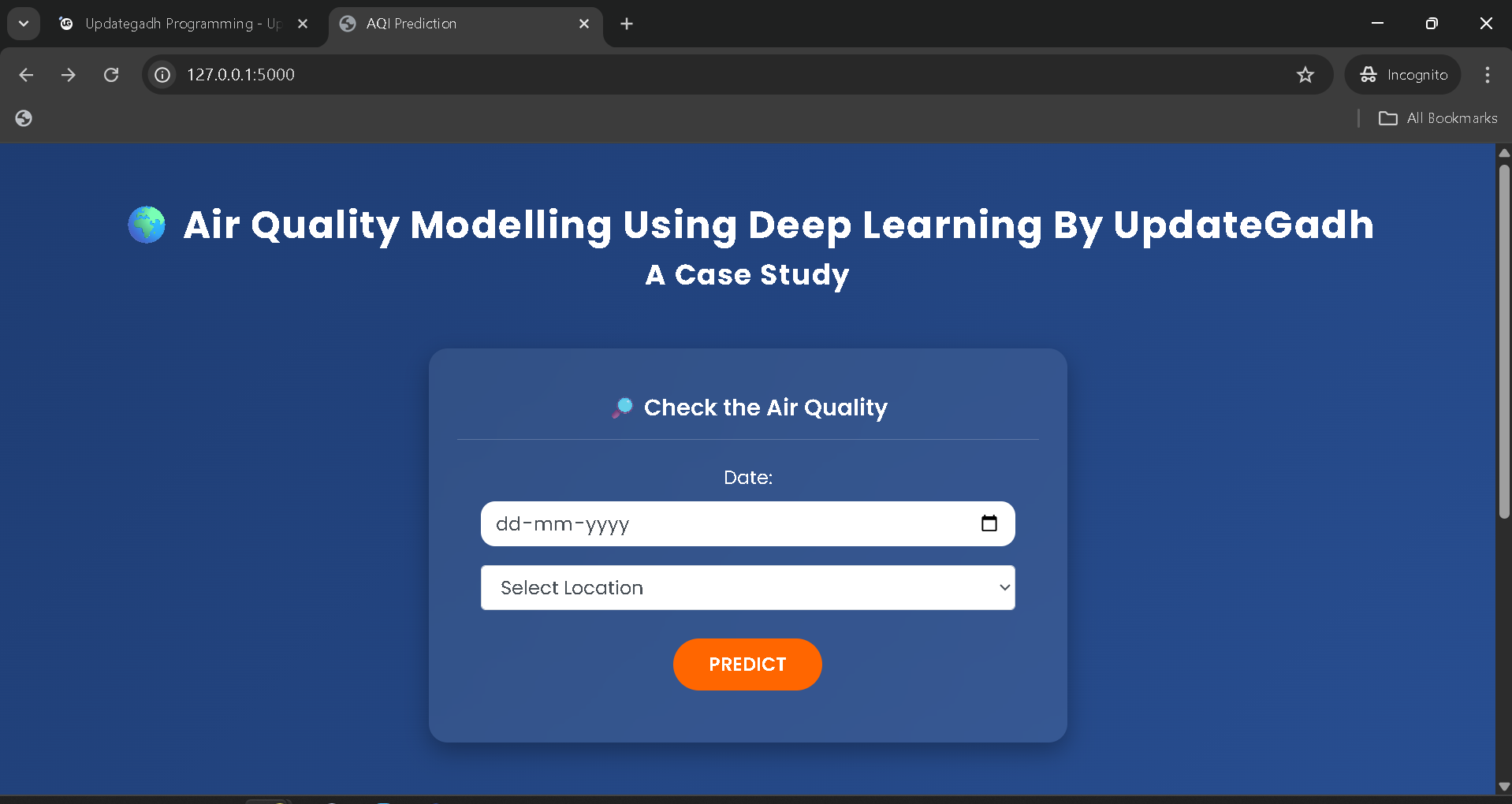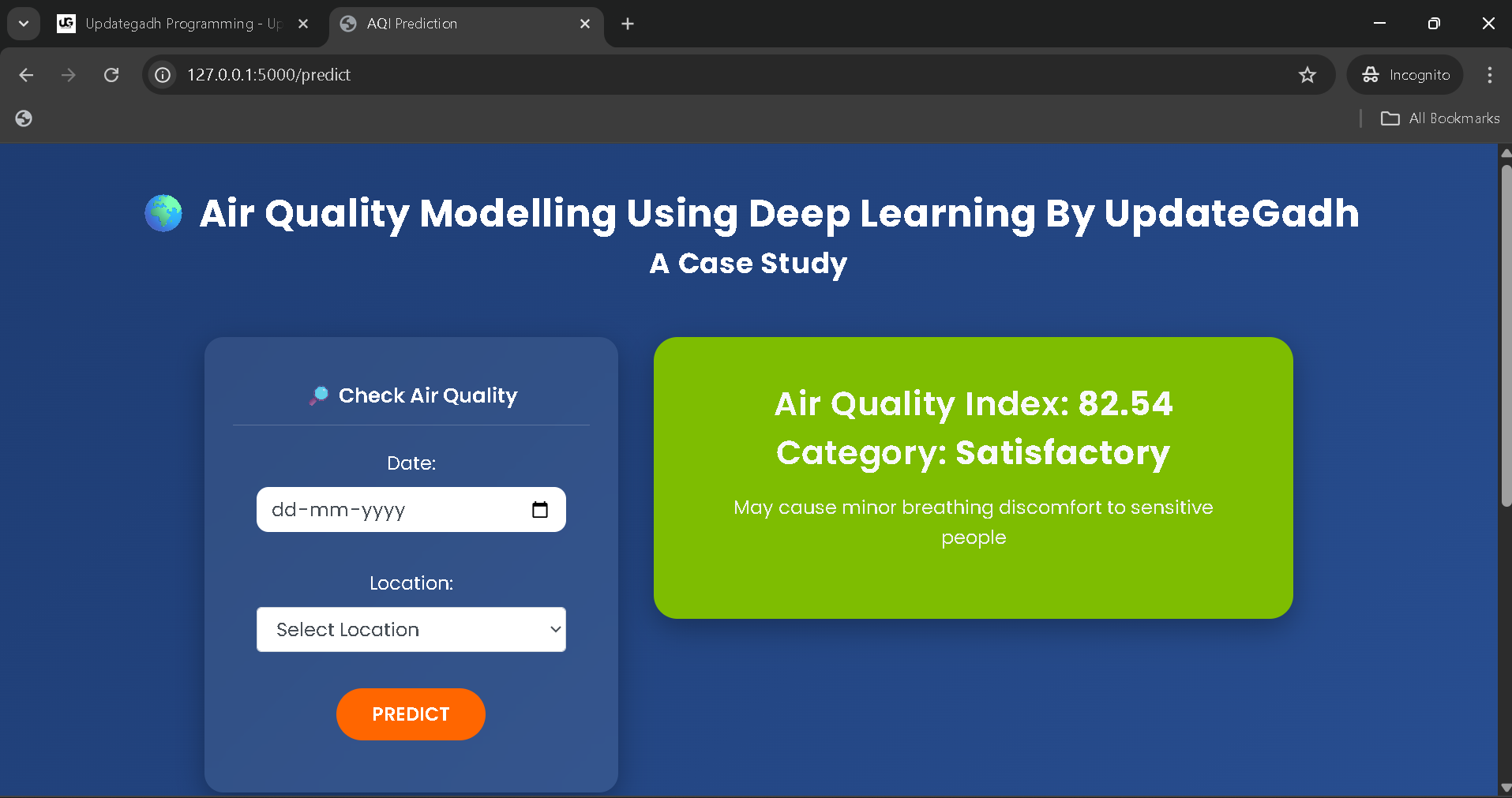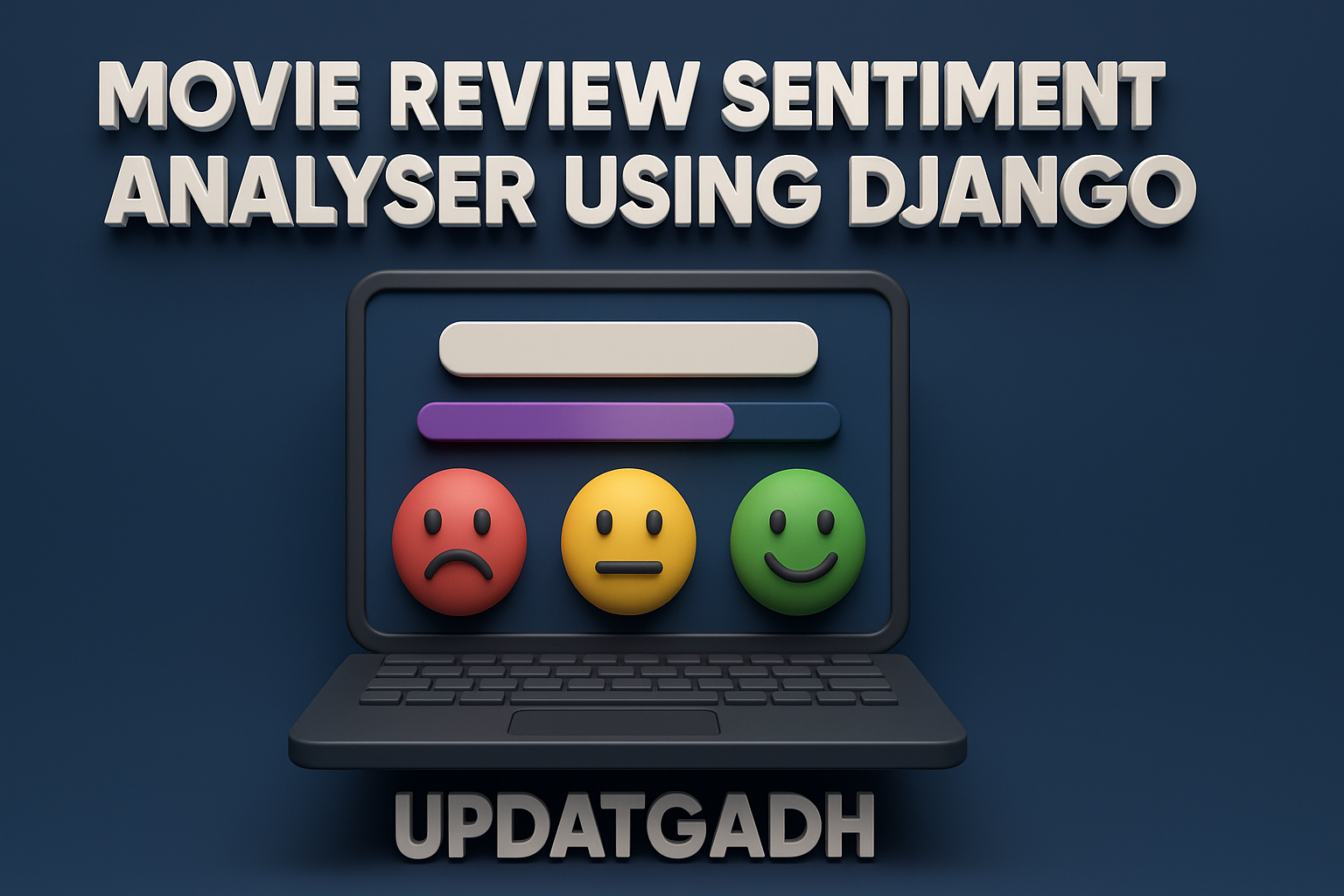
Best Air Quality Prediction Using Deep Learning
Air Quality Prediction
Introduction
A simple project based Air Quality Prediction Using Deep Learning is developed by UPDATEGADH to forecast Air Quality Index (AQI) values more accurately. With increasing industrialization, urban growth, and population density, maintaining clean air has become a major challenge. Poor air quality directly impacts human health, leading to respiratory problems, reduced life expectancy, and climate-related issues.
This project uses a hybrid CNN–LSTM model that combines convolutional layers for pattern recognition and recurrent layers for time-series learning. It works on historical environmental, meteorological, and industrial data to generate reliable AQI predictions.
Unlike static reports, the project also provides a dynamic web application where users can input data and instantly get AQI forecasts along with useful health advisories. This makes it not only a strong academic project but also a practical solution for real-world applications.
By bringing together data science and deep learning, the project shows how AI-powered systems can be used to solve environmental challenges—making it a valuable reference for both students and professionals.
Overview
| Project Name | Air-quality-prediction (AQI Forecast System) |
|---|---|
| Language/s Used | Python (Flask, TensorFlow/Keras), HTML/CSS (Bootstrap) |
| Database | None (uses CSV/Excel files packaged in /data) |
| Type | Machine Learning + Web App (time-series forecasting) |
Download New Real Time Projects :-Click here
What Is the Project About?
Air quality has direct effects on our health and daily routines. The project forecasts AQI values so people can make small, timely decisions—like rescheduling outdoor activity or wearing a mask during high-pollution hours. Under the hood, the system uses a hybrid 1D CNN + LSTM neural network trained with Keras/TensorFlow. The repository bundles trained model files (/models/conv_lstm_hyb.h5 and supporting .h5 variants), a clustering model (/models/kmeans.pkl), and ready-to-serve Flask views (/templates/index.html, /templates/predict.html).
Why Air Quality Prediction Is Relevant
The air we breathe affects both short-term and long-term health. Pollutants can travel through the bloodstream, reaching vital organs and causing conditions such as asthma, cardiovascular diseases, and even cancer. Beyond individual health, air pollution contributes to climate issues and reduces overall life quality.
Urban centers with dense populations, rapid industrial growth, and infrastructure expansion face more severe air quality challenges. By forecasting AQI at a regional level, this project helps people, policymakers, and students plan their activities better and take preventive measures.
Data Collection
The dataset integrates four categories:
- Air quality: SO₂, NO₂, PM₂.5, PM₁₀
- Meteorology: temperature, wind speed, surface pressure, precipitation, humidity
- Industry: counts of industries and units
- Population: area-wise population figures
The project includes prepared inputs in /data—notably input_for_app.csv for inference and input_cluster.csv for clustering. Location references in the data are handled using KMeans clustering for regional grouping.
Project Structure
app.py: Flask server with routes for form input (date, region) and prediction rendering./templates/:index.html(form UI),predict.html(results view with color-coded AQI and health tips)./static/style.css: Styling for front-end./data/: Cleaned/engineered inputs (input_for_app.csv,input_cluster.csv, plus the original Excel)./models/: Trained models (conv_lstm_hyb.h5, auxiliary.h5LSTM variants, andkmeans.pkl).requirements.txt: Dependency list.Procfile:web: gunicorn app:appfor Heroku.
Note: The date selector in the UI caps at 2021-08-27, matching the final data window used during training.
The Hybrid 1D CNN–LSTM Network
Time-series AQI forecasting benefits from two capabilities:
- 1D CNN layers detect short-term multivariate patterns in pollutant and weather variables.
- LSTM layers capture temporal dependencies and seasonality with memory cells.
The CNN extracts local features from input windows, while the LSTM models long-range dependencies. The preprocessing pipeline includes null-value handling, outlier filtering, resampling, feature standardization, and supervised sequence generation. Training used Huber loss, Adam optimizer (with scheduled learning rates), 100 epochs with early stopping, and metrics like MAE, MSE, RMSE, and MAPE. The final deployed model is conv_lstm_hyb.h5.
Available Features
- Regional AQI prediction: Forecasts air quality for clustered regions based on input data.
- Date-based forecast: Select a date (up to late 2021) and get predicted AQI values.
- AQI category and guidance: Results include AQI band (Good/Satisfactory/Moderate/Poor/Very Poor/Severe) with health guidance and visual cues.
- Deployment-ready: Configured with
Procfileandrequirements.txtfor Heroku. - Packaged models and data: Includes pre-trained
.h5deep learning models and clustering artifacts.
Installation Guide (VS Code)
- Install Prerequisites
- Python 3.10
- VS Code with Python extension
- Open Project Folder
- Extract the project and open in VS Code (
File → Open Folder).
- Extract the project and open in VS Code (
- Create Virtual Environment
python -m venv .venvActivate it:- Windows:
.venv\Scripts\activate - macOS/Linux:
source .venv/bin/activate
- Windows:
- Install Dependencies
pip install --upgrade pip pip install -r requirements.txt - Run App (Local Development)
python app.pyThen open the displayed local server link in your browser.
Alternative (Flask CLI):
set FLASK_APP=app.py # Windows export FLASK_APP=app.py # macOS/Linux flask run
Usage
- User
- Open the app, select a date and a region, then click Predict.
- View AQI forecast, category, and health advice.
- Student/Researcher
- Explore
/datato study the processed inputs. - Review model training and clustering scripts to understand the methodology.
- Retrain models on newer datasets to improve accuracy.
- Explore
- Admin/Maintainer
- Ensure dependencies are consistent with
requirements.txt. - Deploy using
gunicorn app:appwith Heroku or similar platforms. - Update
/modelsdirectory with retrained models when available.
- Ensure dependencies are consistent with
Contributing
- Follow consistent code formatting.
- Update both Flask templates and backend logic when changing features.
- Provide sample data for quick testing in
/data. - Submit improvements with clear documentation.
License
No explicit license file is included. Unless a license is added, treat the code as All Rights Reserved by UPDATEGADH. For open collaboration, consider adding a permissive license like MIT.
Final Thoughts
This project demonstrates how to bridge the gap between machine learning research and real-world deployment. From a student’s perspective, it’s a complete learning cycle: data collection, preprocessing, model building (CNN–LSTM), and web app deployment. Its applications are real and impactful—people can take better precautions, researchers can track air quality trends, and students can learn to build predictive systems end-to-end.
By packaging the system neatly with models, data, and deployment tools, UPDATEGADH has provided an excellent reference project for learners and practitioners alike.
We have projects Available in all languages:–Click Here
air quality prediction using machine learning github
air quality prediction using machine learning project report
air quality prediction using machine learning ieee paper
air quality prediction using machine learning kaggle
air quality prediction dataset
air quality prediction project
air quality prediction using machine learning project ppt
air quality prediction github
air quality prediction using deep learning github
air quality prediction using deep learning pdf
air quality prediction using deep learning in python
air quality prediction using deep learning 2022












Post Comment